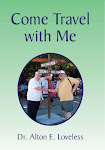
My wife and I agreed that I could go to the museum while she stayed at the hotel and read. (After nearly 50 years of marriage we have learned what each enjoys and offers one the freedom to do what the other desires).
After boarding one of London’s famous black cabs, I advised the driver where I wanted to go. I was taken back and a bit surprised when he said, “Are you sure you want to spend your week in that place? I have lived here all my life and never been there.”
I could hardly understand that because the British Museum is the oldest, and one of the largest museums in the world. I silently questioned, where else can you see some of the greatest treasures of all time under one roof? I had read that you can see at first hand The Elgin Marbles, The Portland Vase, The Lewis Chessmen, The Sutton Hoo Treasure, to name only a few of the wondrous collections awaiting the visitor. The temporary exhibition of the Treasures of Tutankhamun, held by the British Museum since 1972, was the most successful in British history, attracting millions. Having been to the Cairo museum in Egypt, I wanted to see some of the items which I did not see there. Needless to say, I was later fascinated by the Egyptian Mummies and other finds from Tutankhamen’s past. I was also totally inspired by the superb exhibition of prints and drawings available no where else in the world. I was told to allow plenty of time for the visit because the British Museum is a vast storehouse of treasures. I gave a whole day which was not near enough and realized what the cabbie meant where he said a whole week.
All through the day I kept wondering how this storehouse began and where many of the items it preserved came. After some research, my questions were answered. In 1753 the Government of the day bought the collection of Sir Hans Sloan, a wealthy Doctor who practiced in Chelsea. The collection consisted of over 80,000 curios including fossils, plants, coins, medals and prints. This unlikely assortment formed the beginning of what has become certainly the biggest, and probably one of the best museum collections in the world. An act of Parliament established the British Museum as the world's first public museum. The Cottonian Library formed by the Harleys, Earls of Oxford, was immediately added to the collection. In 1757 George II presented The Royal Library to the museum. In 1823 George III conferred on the museum the right to a copy of every book printed. This right continues to the present day.
Today, the British Museum is home to no less than six and a half million objects and has ninety four permanent and temporary exhibition galleries. An Education Department provides a wide range of services for adults and children. Other departments are Coins and Medals, Egyptian Antiquities, Ethnography, Greek and Roman Antiquities, Japanese Art, Medieval and Later Art, Oriental Antiquities, Pre-Historic and Romano-British Antiquities, Prints and Drawings, and Western Asiatic Antiquities.
My wife and I talked into the night about what I saw and was kind to listen. Before slowing entering into my sleep, I can remember her words, “Whew, I am sure glad you spared me all that walking.”
I can only imagine what heaven will be like. The holy scriptures describe it as a beautiful place. As I grow older I know I will enjoy that which the good Lord has arranged for us.





No comments:
Post a Comment